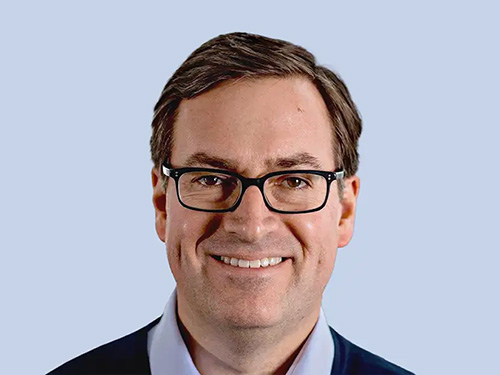Flexport’s CEO Clark promises to bring Amazon values to freight forwarding
Dave Clark, the new CEO for digital freight forwarder Flexport, is bringing his former Amazon colleagues to help him recalibrate the San Francisco-based company.
Clark took over the CEO position from Flexport founder Ryan Petersen.
Clark left Amazon after 23 years where he was most recently Amazon’s Worldwide Consumer CEO and previously was Senior Vice President for Amazon’s worldwide operations.

In January, it was widely reported in the business media that Clark had hired former Amazon employees including public-relations executive Kelly Cheeseman, logistics executive Parisa Sadrzadeh and human-resources executive Darcie Henry.
Clark also engineered the hiring of Teresa Carlson, a former Microsoft and Amazon executive, who was named President and Chief Commercial Officer, overseeing sales, marketing and communications. Carlson specialized in cloud computing and founded and for more than a decade led Amazon Web Services’ worldwide public-sector business, where she worked with government and nonprofit clients globally.
Back in 2013, when Flexport was founded, the company was among the first “digital” forwarders whose business plan was to arrange ocean and airfreight shipments for retailers and manufacturers through a web interface.
While the idea was new, Flexport has grown quickly and posted a gross revenue of $3.3 billion in 2021. And according to Petersen, last year Flexport’s estimated 2022 revenue was $5 billion. The freight forwarder now has about 3,200 employees across 19 offices and six warehouses around the world.

Amazonization of Flexport
On February 28th, Clark told an audience at TPM 2023 in Long Beach that he is recalibrating Flexport with expertise that he developed at Amazon: “In 22 years at Amazon, I really got to build something for Amazon and for hundreds of thousands of sellers that I think really helped them. And now is an opportunity. I wanted to go out and do it again.”
His plans are to eliminate waste in freight forwarding and emphasize scale through digitization: “It's a real opportunity to bring technology and … the new world that's being built into this space and to help make it easier for customers to put a lot of waste out of the system. There's a tremendous amount of not just wasted financial resources, but wasted natural resources associated with too much inventory, too long transit time.”
Clark said his aim is “with our freight forwarding platform and the tech that's there … start going in both directions. So, moving further into origin with services and further into destination with services, with trucking and distribution and consolidation needs, consolidation and distribution … maybe fulfillment or delivery at some point. So, we have this opportunity to bring all that into a single pane of glass.”
In addition, he proposes to: “then connect capacity in each one of those levers with … partners around the world and enable people to run their supply chain efficiently … and let them all benefit from the totality of scale. Because anybody in this business knows scale is the difference. It's utilization of the shift, utilization of the truck, utilization of the can (i.e., container). You’re building to greater density which drives pricing and drives speed and drives valuation, drives everything. And most companies will never have the opportunity to roll up that kind of scale that really large (scale of a) global conglomerate. And our mission is to make that easy for everybody.’
Cuts: One Step Back for Two Steps Forward?
However, Clark said that there have been cutbacks at Flexport in sales and customer service so as to emphasize scale: “I feel that way about Flexport … what we realized was that we had phenomenal teams, but we had too many people given where volume was going …. We had too many sales, we had too many people in our customer service spaces. We had also done a big transformation regrouping our operational talent … to drive more operational execution into our business. And as a result, we were getting more efficiency on top of that … And we wanted to move much, much faster on our tech product. So, we trimmed back on the roles that were not the right fit for where we needed to be going forward. And we added to the roles that were really important for us to build for the future. We're taking the opportunity, (during) this little sort of air gap of manufacturing for inventory globally and using that to put our resources towards building our next generation product.”
Clark was asked “should we be considering you a tech enabled forwarder, a technology provider that sells logistics services or some new sort of entity that does not currently exist?
Clark responded: “Yes. Yes. And working on it.”
© Copyright 1999–2024 American Journal of Transportation. All Rights Reserved

